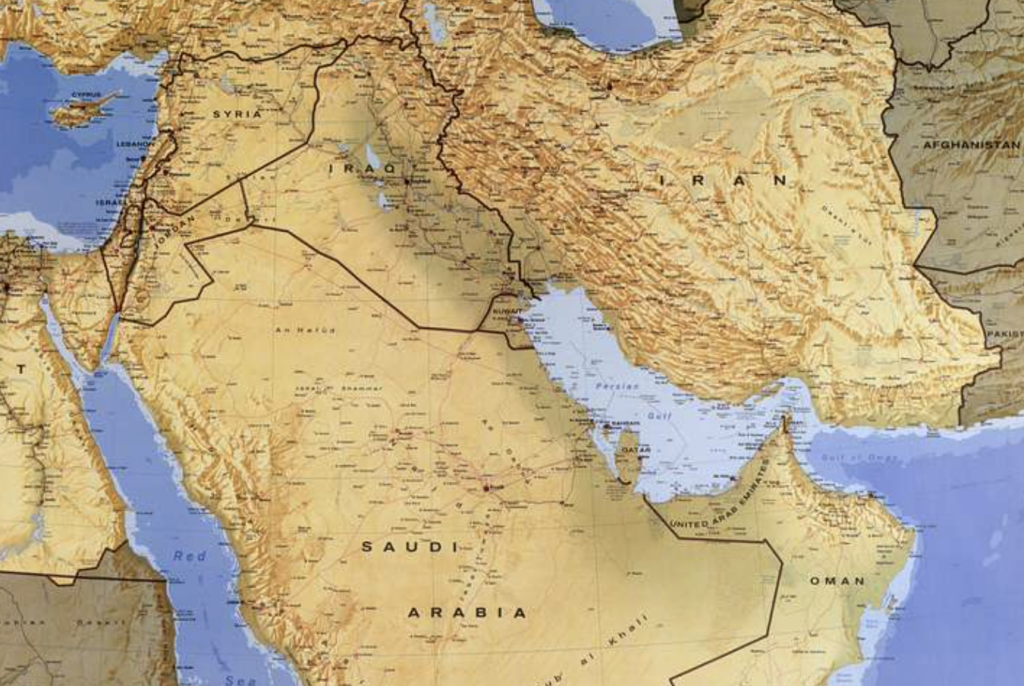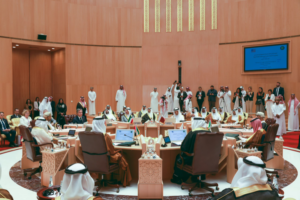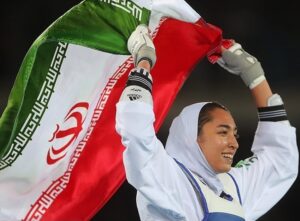Introduction
Saudi Arabia and Iran have known a contentious relationship over the past decades that fluctuated between proxy-conflict to careful talks and rapprochement in the last years. Within this context, cultural relations scarcely take place despite strong historically cultural ties. As part of the ongoing ‘Iran-Saudi Dialogue Initiative’, Stimson Europe and CARPO hosted a workshop in August 2022 that brought together distinguished Saudi and Iranian experts from the field of literature, media, religious diplomacy, and documentary filmmaking, in addition to several European experts, to discuss the challenges and opportunities of cultural diplomacy and cultural exchange in the case of Iran and Saudi Arabia.
Cultural relations a utilized bridge
Cultural relations can take different forms, from cultural diplomacy on the public policy level of states, to cultural exchange at the people-to-people level. The workshop pointed to a lack of both in the case of Iran and Saudi Arabia. Obstacles to cultural relations, as one participant mentioned, are formed among others by; 1) a public and political discourse focused on differences rather than shared cultural and religious heritage, 2) the lack of physical and virtual places where Iranians and Saudis can meet, and 3) the lack of a shared language.
Despite these challenges, participants emphasized the import role culture can play in contributing to better relations between the two countries by increasing mutual understanding and reshaping the negative image that exists of the Other.
Despite these challenges, participants emphasized the important role culture can play in contributing to better relations between the two countries by increasing mutual understanding and reshaping the negative image that exists of the Other. Increasing cultural relations can further support parallel political and security talks. To achieve this, as the participants mentioned, cultural relations should be related to the social or political context they take place in and should not be confined to a social or political bubble or elite of the respected countries.
Exploring fields of cultural cooperation between Saudi Arabia and Iran
The workshop focused on four areas of potential future cultural relations: literature and translation, documentary filmmaking, the media, and religious diplomacy.
This first, literature, showed to be a respected form of cultural expression in both countries, yet literary exchange is minimal. One participant referred to the fact that while the historical Persian literature is much loved and read in Saudi Arabia, modern Iranian literature is perceived as politicized and thus not widespread in the Kingdom. Another participant mentioned that the Arabic literature that is currently translated to Persian is mostly politically and/or religiously motivated.
The workshop focused on four areas of potential future cultural relations: literature and translation, documentary filmmaking, the media, and religious diplomacy.
Documentary filmmaking, like literature, can offer the outsider a view on a specific society. During the workshop, one Iranian participant talked about working with a Saudi counterpart in developing a documentary-film on everyday life in both countries. Projects like this can emphasize cultural differences but also display cultural communalities. Such forms of cooperation, however, were described as difficult to implement given the challenges for artists from the two countries to meet.
Media, as one Iranian participant noted, can be part of cultural relations by providing a platform to present the Other’s culture. Here it is highly relevant what language is used by journalists, as moderate and nuanced language can support de-escalation of regional tensions. Participants also mentioned topics on which Iranian and Saudi journalists could publish jointly or write about in the other country’s media, such as sports, environmental challenges, and of course cultural themes.
Lastly, the workshop discussed the role of religion in fostering cultural relations. To build trust through religious relations, rather than use it as a tool for political division, is a delicate process and needs to be done by and through the right actors, as one participant emphasized. Participants mentioned examples of closed-door meetings in Mecca between religious authorities. On a people-to-people level, positive (shared) religious experiences, for example in performing the Hajj or religious holidays, strengthens relations at the people-to-people level.
Cultural relations between Iran and Saudi Arabia should be embedded in the social and political contexts of both countries
Key takeaways and recommendations
During the workshop the participants came up with different recommendations and ideas for political decision-makers in Iran, Saudi Arabia, and Europe, as well as for and NGOs and civil society actors:
- Multi-facetted and socially embedded engagement – Cultural relations between Iran and Saudi Arabia should be embedded in the social and political contexts of both countries and should not be confined to an elite. Initiatives fostering cultural relations should, furthermore, be connected to other bilateral initiatives such as political and security dialogues, and not viewed as a stand-alone effort.
- Role of entrepreneurs – The economic potentials of cultural relations, such as tourism, should be outlined and utilized as an incentive to initiate broadened cultural exchange. For example, in both Iran and Saudi Arabia highly important religious and historical sites are located that could attract tourists alongside natural landscapes and ancient cities and villages.
- Role of third parties – European governments, as well as NGOs and cultural organizations are viewed in both Iran and Saudi Arabia as welcomed enablers of (cultural) dialogue initiatives. They could provide the confidential setting and logistics needed for Iranians and Saudis to meet (in-person and/or virtually) and share experiences, insights, and ideas.
- Encouraging participation in each other’s cultural events – Cultural output from each country could be introduced to the Other through festivals and cultural events. In the case of literature, translation of publications from the respective other country could feature in bookfairs, as well be encouraged through literary or translation awards. When it comes to documentary films, these could similarly be shown in film festivals or highlighted in media-outlets in each other’s country.
- Promote nuanced and moderate language in media – Polemic language in media is one of the key factors shaping sentiments about the other society. Therefore, media outlets and individuals working in the field should be encouraged to use inclusive, non-violent language when talking about each other. Featuring authors or cooperating on pieces might support this aim.
- Use historical and cultural heritage as a unifying factor – The history of the region could be reconsidered in a way that creates a sense of unity rather than division. This can for example be done by referring to glorified historical figures shared between Saudi Arabia and Iran, such as the polymath Abu Hamid al-Ghazali and the grammarian Sibawayh.
- Provide space for minorities and underrepresented groups in cultural relations – Groups like youth, religious and ethnic minorities, and female stakeholders continue to be underrepresented in the field of cultural relations. The inclusion of their perspectives and narratives is of paramount importance to thoroughly mirror the societies of both Iran and Saudi Arabia.




